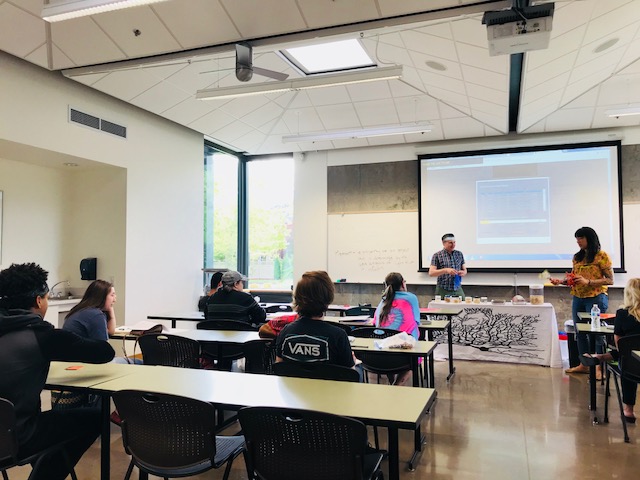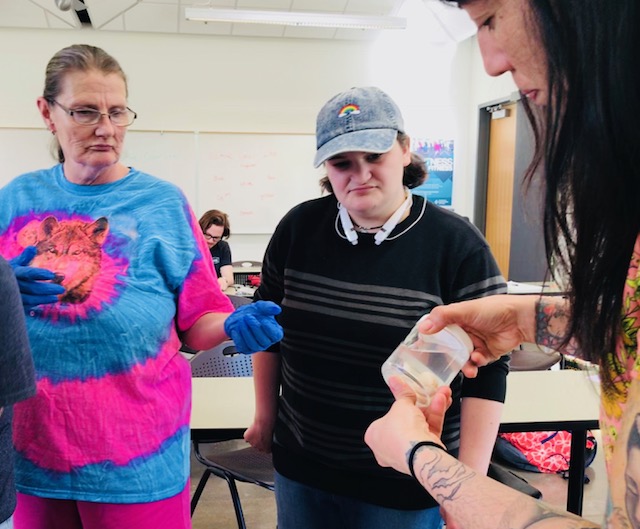Post by Kanani Miyamoto, Noggin Resource Council, Arts Integration
“Perception is the medium” –Bridget Riley
NW Noggin recently visited my Portland Community College (PCC) Color Foundations class…

As visual artists we first learn the building blocks of art, the elements of art: color, form, line, shape, space, texture, and value. Color is the most complex. Sir Isaac Newton, a celebrated English mathematician and physicist, began experimenting with color in the 1600s. It was once thought that color was a mixture of varying levels of darkness with “pure white light.” Newton, in contrast, came to the conclusion that light alone is responsible for color. Newton held a prism to white light and saw that refraction created an entire rainbow of different colors…

“If the Sun’s Light consisted of but one sort of Rays, there would be but one Colour in the whole World” -Isaac Newton
LEARN MORE: Newton’s Rainbow
LEARN MORE: Newton’s Color Theory, ca. 1665
If color is not an intrinsic property of objects then how do we really perceive color?

NW Noggin brought the brains to PCC’s color theory class to do some explaining. Students learned about the photoreceptors we have in our eyes and how and where the brain processes color. The class learned about the color blind island of Pingelap and details on color blindness.

LEARN MORE: On Island of the Colorblind, Paradise Has a Different Hue
LEARN MORE: Hallucinations @ HeLa High
Color foundations students had also been really thinking about subjective color, how color relates to emotion, and can color really affect behavior. Is blue really calming? Can red make you run? Can color influence the hormones our brains released? These ideas led conversation to thinking about our natural world, the warning colors some plants and animals exhibit to protect them selves from danger. Is our raised arousal and attention towards red in emotional contexts a result of evolutionary adaptation?

LEARN MORE: Color and emotion: effects of hue, saturation, and brightness
LEARN MORE: Colour Preference to Emotions in Relation to the Anxiety Level among School Children
LEARN MORE: The color red attracts attention in an emotional context

We see and sense so much. Learning how we do this is the ultimate tool in a visual artist’s tool box. The perception and science of color is integral learning for any visual artist.




